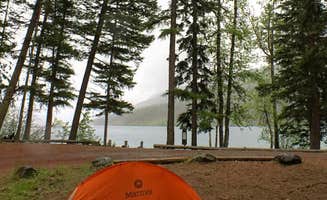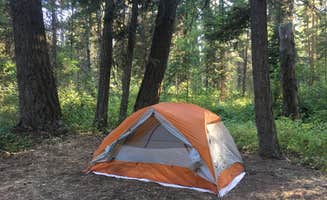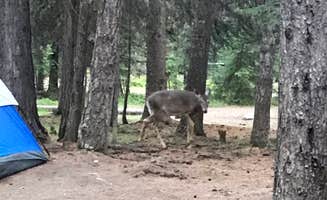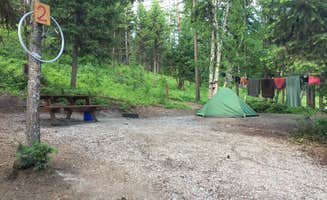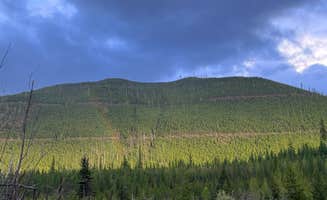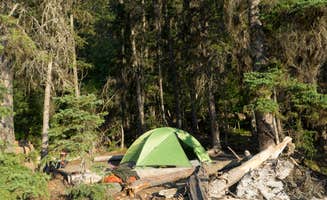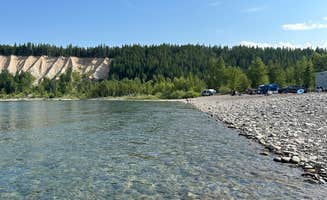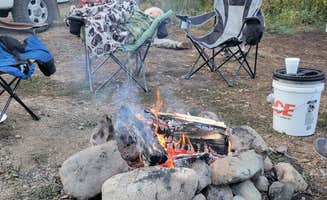Tent camping near Fortine, Montana offers varied options within the Kootenai National Forest at elevations between 3,000-4,000 feet. The camping season typically runs from late May through early October, with July and August providing the most reliable weather conditions. Summer nights often drop below 50°F even when daytime temperatures reach the 80s.
What to do
Kayaking and canoeing at Bowman Lake: Located in Glacier National Park's remote northwestern section, Bowman Lake offers non-motorized boating opportunities. "The lake is so calm and relaxing. I got up one morning earlier than everyone else, and took the kayak on the water. The sunset was beautiful," notes one visitor at Bowman Lake Campground.
Riverside fishing: Cast for trout along North Fork Flathead River at Blankenship Bridge dispersed camping area. "I loved this spot! I was able to get a spot back in the trees and shade a bit, but could still just walk down to the river," writes a camper at Blankenship Bridge.
Backcountry hiking: Venture from your campsite to nearby trails. "Kintla Lake sees less visitors despite how amazingly scenic it is due to its remote location inside Glacier National Park... We kayaked and tent camped for 2 nights," reports a visitor who accessed trails from their campsite.
What campers like
Primitive experience: Many campers value the undeveloped nature of camping in this region. A camper at Kintla Lake Campground shares, "Very primitive camping at the end of a very bumpy dirt road about 40 miles in. There are only 13 sites and given the arduous drive, RVs are seldom seen here."
Wildlife viewing opportunities: The region hosts diverse wildlife including deer, bears, and various birds. "We saw multiple deer, various birds, a grizzly on way in... I couldn't sleep any more so I got up at 4:30, made coffee, and walked down to the lake about 5 am. It was like a painting," notes a camper from Bowman Lake.
Fall color displays: September and October bring vibrant foliage changes. A visitor to Kintla Lake wrote, "Visited in October, beautiful colors and calm weather!" Reduced crowds and diminished mosquito populations make this shoulder season appealing despite cooler temperatures.
What you should know
Bear safety requirements: Bear activity requires proper food management throughout the region. At Martin Lake, a camper advises, "After a short hike to the lake from the trailhead, there is one site right on the waters edge with a primitive fire ring. Advisable to store food by hanging from high tree branch to discourage bear investigations."
Road conditions to remote sites: Many premier camping locations require driving on rough roads. A visitor to Kintla Lake warns, "The drive here wasn't easy, but once you're there it is worth it." Another camper at Blankenship Bridge notes, "The entrance is the tricky part. If you have low ground clearance you may have an issue but I saw people that made it in regular sedans."
Limited facilities: Most tent camping locations have minimal amenities. A Bowman Lake visitor reports, "There is drinking water, pit toilets, fire rings, picnic tables, plus some bear-proof storage boxes." At more remote sites, no water sources or toilets are available.
Tips for camping with families
Protection from insects: Mosquitoes can be intense, especially near lakes. "Warning: I experienced more mosquito bites here than at any other spot in Montana. Bring your repellant!" advises a visitor to Bowman Lake.
Finding shade in summer: Temperatures can reach the 80s in July and August, making shaded sites important. A camper at Moose Lake shares, "Moose Lake is a really small campground at the end of the road. Plenty of parking for day use but limited to only a few spots for dispersed tent camping."
Wildlife encounters: Prepare children for wildlife sightings. "Deer frequent the campsites, sniffing around the fire pits, searching for food, and they're not scared of people. They'll come right up to your tent. It's crazy," explains a Bowman Lake visitor.
Tips from RVers
Size limitations for remote areas: Many tent camping locations near Fortine have restrictions for larger vehicles. At Stillwater Getaway, a visitor notes, "Diverse campground with tent sites, car camping sites, and cabins and teepees. Ryan was super friendly and offered showers, an outdoor kitchen, kayaks to use, and potable water."
Road clearance considerations: Rough roads make access challenging for low-clearance vehicles. A visitor to Blankenship Bridge reports, "Deep rutted muddy holes filled with water to get to site. Sketchy low trees and narrow road." Another RVer mentions, "Pulled out Alliance Valor 32A10 down the horrible access road. Had to do a walk around after to verify no damage."
Campground capacity limitations: Smaller campgrounds fill quickly during peak season. "You need to arrive early to find a site as there are a limited number of sites," advises a Kintla Lake camper, while another notes the entire campground has just "13 sites."


